Events
| Name | organizer | Where |
|---|---|---|
| MBCC “Doing Business with Mongolia seminar and Christmas Receptiom” Dec 10. 2025 London UK | MBCCI | London UK Goodman LLC |
NEWS

Mongolia to extend quarantine measures until 30 June www.news.mn
The National Emergency Commission decided on May 25 to extend the period of advanced emergency readiness until 30 June in order to prevent an imported wave of coronavirus. The decision will be discussed at Cabinet meeting on Wednesday. The quarantine measures were first announced on 27 January. This new extension of lockdown means, international flights in Ulaanbaatar will not be resuming until 1 July. The Health Ministry still rates the risks of local transmission in Mongolia as being high.
As of today, the country of three million has 141 confirmed cases of coronavirus; all of them are imported. Currently 1500 people remain in observation for symptoms of coronavirus after 4950 people have been discharged from isolation centres.

Mongolia to maintain strict virus regulations 'until vaccine found' www.medicalxpress.com
Mongolia will maintain strict coronavirus regulations until a vaccine is found, the prime minister said Monday, raising the prospect of the country being locked down for months to come.
Wedged between Russia and China, landlocked Mongolia on March 12 become one of the first countries to close its borders in the face of the growing global epidemic.
Universities, schools and kindergartens are closed until September, conferences and public protests are banned, children under 12 are not allowed in malls or restaurants, and facemasks are mandatory.
"The country will keep the quarantine rules until a vaccine becomes available," Prime Minister Khurelsukh Ukhnaa told reporters in the country's parliament.
He did not provide more details about what measures would remain in place, but said he did not know when borders would reopen.
Despite the announcement, he said parliamentary elections will be held as scheduled on June 24.
Scientists around the world are rushing to find a vaccine for the virus that has killed more than 340,000 people and infected over five million in 196 countries and territories.
Mongolia has recorded a low 140 cases, with most imported from Russia. The returnees were put under strict quarantine for three weeks.
The country has sent planes to repatriate Mongolians abroad, but thousands remain stranded in other countries.
Only vulnerable groups—including pregnant women, seniors, children with their parents, and people with serious health issues—are allowed to return, with authorities saying Mongolia lacks the capacity to handle everyone.
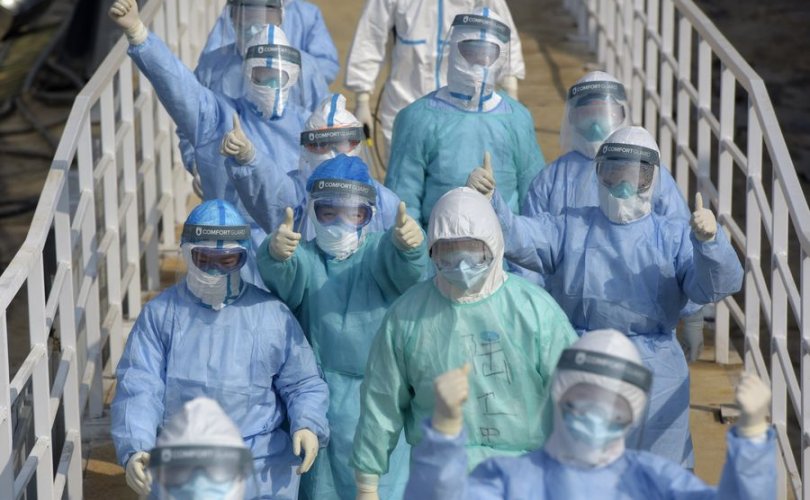
Mongolia reports one more recovery from COVID-19 www.xinhuanet.com
Mongolia has reported one more COVID-19 recovery, bringing the total number of recoveries in the country to 33, Amarjargal Ambaselmaa, head of the surveillance department of the National Center for Communicable Diseases (NCCD), said Monday.
The NCCD conducted a total of 22 COVID-19 tests Sunday and the results were all negative, Ambaselmaa said at a press conference.
The number of confirmed COVID-19 cases in Mongolia so far is 141.
All of the confirmed cases were imported, mostly from Russia, according to the center. No local transmissions or deaths have been reported in the country so far.
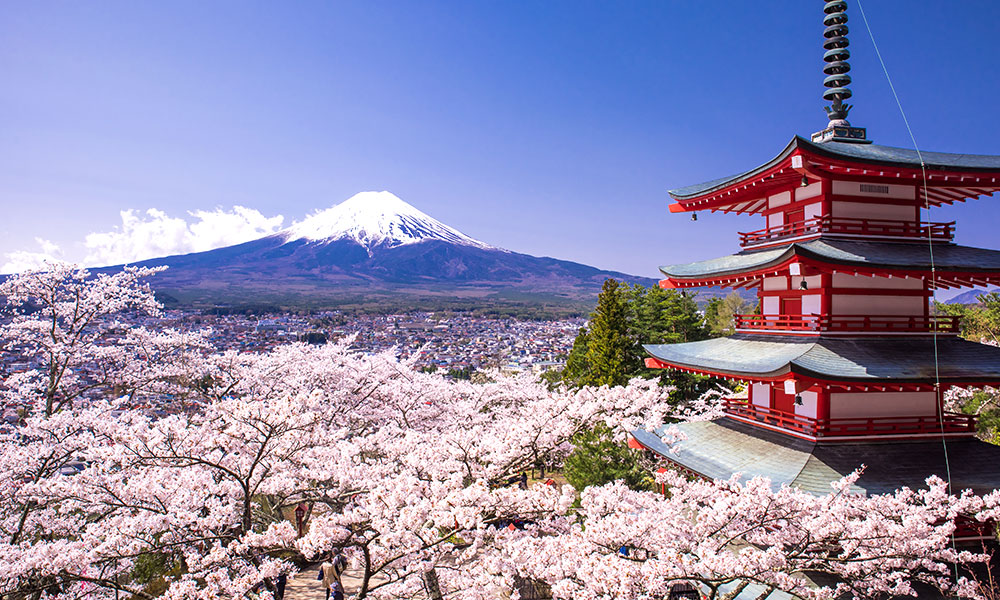
Japan to provide non-refundable aid to Mongolia www.montsame.mn
Ulaanbaatar /MONTSAME/ On May 22, Minister of Foreign Affairs D.Tsogtbaatar had a telephone conversation with his Japanese counterpart Motegi Toshimitsu.
The Ministers mutually briefed about policies, actions and measures being taken by the Governments of the two countries against the COVID-19 pandemic and exchanged information on them.
Underlining that the world countries will overcome the danger of the pandemic together, Minister Tsogtbaatar presented specific initiatives being proposed at a regional level in this direction.
While highlighting the importance of close regional cooperation to fight against the pandemic, Minister of Foreign Affairs of Japan Motegi Toshimitsu made remarks, commending the Government of Mongolia for its effective measures that helped achieving zero local transmission and protecting the health of its people since an early date of the global spread of the virus.
Furthermore, Motegi Toshimitsu notified that the Government of Japan has decided to provide rapid financial assistance and non-project, non-refundable aid to Mongolia for overcoming economic difficulties.
Minister D.Tsogtbaatar expressed his sincere gratitude for the Japanese support as well as assistance and the supply of flu drug Avigan provided to Mongolia through international organizations.
Foreign Ministers of the two countries also affirmed their intention for cooperating in the celebration of the 50th jubilee of the establishment of diplomatic relations between Mongolia and Japan, which will fall in 2022, and deepening the Strategic Partnership.
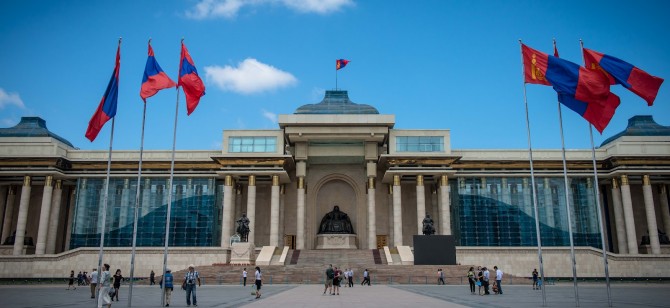
Amendment to Constitution comes into force today www.montsame.mn
Ulaanbaatar /MONTSAME/. The amendment to the Constitution of Mongolia, which was adopted by the Mongolian Parliament – State Great Khural on 14 November 2019, entered into force at 12.00 AM of May 25, 2020, today, or at the hour of Horse of the third day of the first summer month of the year of Metal Rat of the Seventeenth 60-year Cycle by the Mongolian calendar.
A working team on developing the amendment led by parliament member D.Lundeejantsan delivered a press briefing today on the constitutional amendments. MP Lundeejantsan said “Thanks to the recent amendment, the Constitution of Mongolia, which is a social contract between the state and the people of the country, has now become whole, and beginning from today started taking effect across the nation”
“The 1992 Constitution of Mongolia first entered into force at 12.00 hours on the 12 the of February of 1992, or at the hour of Horse on the prime and benevolent ninth day of Yellow Horse of the first spring month of Black Tiger of the year of Water Monkey of the Seventeenth 60-year Cycle.”
“The latest amendment to the Constitution, which improved the previous seven amendments made to the Constitution in 2000, is believed to open up the opportunities for the population of Mongolia to benefit from the natural resource wealth, improve the country’s parliamentary democracy by ensuring the people's governing rights and increasing the responsibilities of the parliament, enable the stability and responsibility of the government that is guided by long-term development policies, enhancing the responsibilities and independence of the judiciary through several fundamental changes in it, and improve the local government system” said MP Lundeejantsan.
“The upcoming four-year period will be a time of governance reform and legal revolution. More than 40 laws being revised accompanying the amendment to the Constitutions will facilitate achieving justice, accountability of authorities and transparency in budgeting.
The amendment to the Constitution was made in four different areas of parliamentary system and governance, executive power, enhancement of accountability of judicial systems and of local governance system.

Foreign trade balance deficits USD 213 million www.zgm.mn
The Bank of Mongolia (BoM) announced its foreign trade review for the first four months of this year. Trade balance deficits USD 213 million, plummeting by USD 959 million from a year ago. The amount of commodity turnover volume decreased by 31 percent or USD 1.3 million to USD 2.9 million compared to the same period of the previous year. In particular, export dwindled by 45 percent to USD 1.37 million and imports deteriorated by 10 percent to USD 1.5 million.In the first four months of 2020, the balance of currency paid trade fell by USD 918 million from the previous year, resulting in a deficit of USD 117 million. In terms of trade with neighboring countries, 58 percent or USD 1.7 million of the total trade turnover was with China and 17 percent or USD 494 million was with Russia. Trade with Russia decreased by 3 percent year over year, and trade with China downturned by 38 percent. Additionally, export contraction in 45 percent was mainly triggered by a slump in mining products export. In other words, a decline in exports of mining products led to a 40 percent reduction in total exports. The rate of mining raw materials in total exports increased by 2 percentage points from the same period of the previous year, while the share of livestock exports slum ped by 2.4 percentage points.
...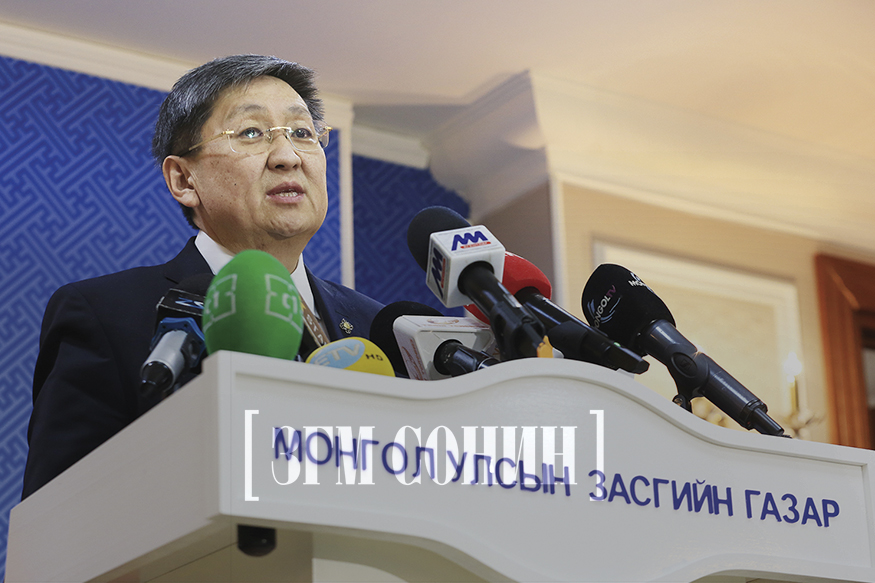
MNT213 billion spent on health sector www.montsame.mn
Ulaanbaatar/MONTSAME/. At today's extended meeting of the State Emergency Commission, Minister of Finance Ch. Khurelbaatar reported on the economic measures being taken by the Government during the COVID-19 pandemic.
In the wake of the COVID-19 spread, the Government of Mongolia is implementing the package of measures to stimulate the economy, support livelihoods of target groups, save jobs, and protect the health of citizens in accordance with seven resolutions of the Government.
In connection with the pandemic, MNT213.7 billion has been spent on the health sector so far, of which MNT176.1 billion was provided with foreign assistance and loan, MNT20.6 billion was financed with budget adjustments in education and health sectors as well as MNT17 billion was funded with government reserve and budgetary allotment.
The abovementioned amount was used for additional salary to medical and health care workers of 13 hospitals, the purchase of 3.9 million pieces of protective clothes, 33 kinds of pharmaceuticals and medical devices, 18,700 pieces of professional equipment, 72 pieces of respiratory apparatus and other necessary equipment.
Beginning from February 1 until October 1, 2020, customs and VAT duties are exempt for pharmaceuticals, medical devices, equipment, and disinfectants and sanitizing substances to be imported for diagnosis and treatment purposes.

UB to use facial recognition to fight crime www.news.mn
By 2022, surveillance cameras detecting faces will be installed across 80 percent of the Mongolian capital. Under the ‘Safe City’ programme, which is being implemented by the Ulaanbaatar City Administration, facial recognition devices will prevent crimes. The programme will be implemented in three steps. As a first step, 2000 cameras will be installed in UB this year; 600 of them at road intersections and the remaining in public spaces.
Currently, The Traffic Control Centre of Ulaanbaatar controls only five percent of all roads; the additional 600 cameras will increase it to 28 percent.
UB aims to have 40 percent of the city covered by cameras by 2021; by the following year 6822 spots will be installed. It is estimated that by controlling 80 percent of city with surveillance cameras will help decrease number of crimes by 40-50 percent.
UB installed 3600 cameras by financing from the State Budget over the last decade; 40 percent of them are now out of operation.
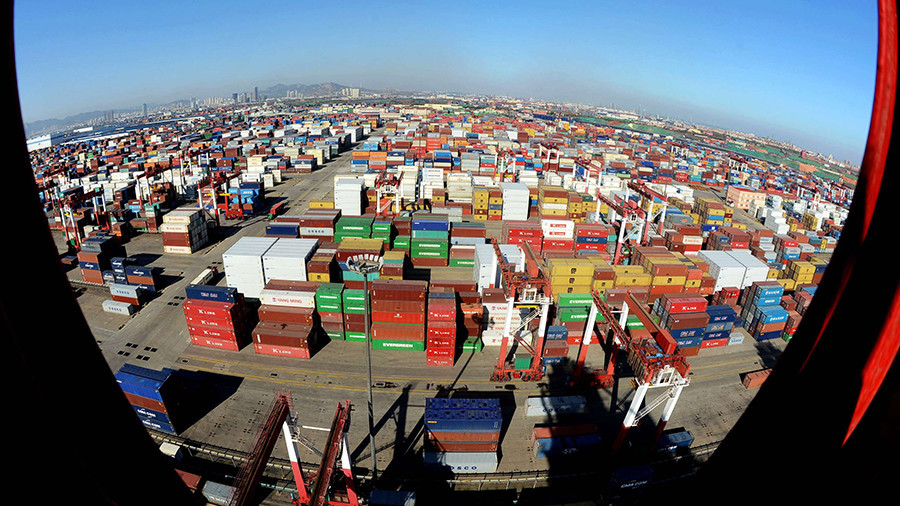
Mongolia and Taiwan: a growing trade relationship www.news.mn
Despite the distance and limited trade figures between the two countries, Mongolia is a crucial partner for Taiwan due to its abundant metal resources; however, for a country that once built the largest empire in Eurasia, it remains remarkably mysterious to many Taiwanese.
Each year, Taiwan imports millions of dollars worth of copper and alloys from Mongolia as well as other products and textiles. In return, Taiwan exports electronic devices for telecommunications and high-tech machinery for manufacturing to the country. The total trade figure surpassed USD41 million in 2018 — a number that heralded tremendous potential for future growth.
According to the representative from the Ulaanbaatar Trade and Economic Representative Office in Taipei, Z.Lkhagvasuren, around 5,000 Taiwanese visited Mongolia in 2019; currently about 90 percent of the Mongolians in Taiwan are students. Although a visa-waiver program has not yet been established, the Mongolian side is supportive of any measures that might facilitate increased travel between the two countries.
As Taiwan’s health system and advanced medical technology have allowed it to handle the COVID-19 outbreak, Zolzaya believes these strengths can not only benefit Taiwan’s international partners, such as Mongolia, but also strengthen the island nation’s relationships with them as well.

The way we shop has fundamentally changed. That's good news for Alibaba www.cnn.com
New York (CNN Business)Chinese e-commerce giant Alibaba reported strong sales growth and issued a bullish outlook for 2021. Although concerns about the coronavirus pandemic linger, changing shopping trends because of stay-at-home orders have given the company a big boost.
Alibaba (BABA) said Friday that revenue for its fiscal fourth quarter soared 22% to $16.1 billion, topping analysts' forecasts. Operating profit, while down 19% from a year ago, also beat Wall Street's estimates.
The company also predicted that sales for its next fiscal year could hit $91 billion, an increase of more than 25% from 2020.
Because China was the first country to get hit by the coronavirus pandemic, the results from Alibaba and other leading Chinese companies are telling. And they're suggesting the economy is mounting a slow and steady comeback.
Alibaba's mobile users grew at a steady clip, and sales for the company's massive cloud computing business -- which competes with similar services from Amazon (AMZN), Google owner Alphabet (GOOGL) and Microsoft (MSFT) -- rose 58% from last year.
Chairman and CEO Daniel Zhang said those figures reflect changes fueled by coronavirus: "The pandemic has fundamentally altered consumer behavior and enterprise operations, making digital adoption and transformation a necessity," he said. ""We are well positioned and prepared to help large and small businesses across a wide spectrum of industries."
That includes merchants in the United States, where Alibaba has a growing presence helping small businesses list on its platform.
"Covid-19 has had a remarkable disruption on global small businesses, but the grit and ingenuity of US small businesses are driving growth on Alibaba," said John Caplan, Alibaba.com president of North America and Europe in an interview with CNN Business."Small businesses realize they need to get digital and go global."
Last week, Alibaba rival JD.com (JD) also posted solid sales in its latest earnings report. And Pinduoduo (PDD), a Chinese group buying deals site, reported revenue that topped forecasts on Friday.
They're famous for their investments. But Warren Buffett and Masa Son keep striking out
They're famous for their investments. But Warren Buffett and Masa Son keep striking out
Shares of Alibaba were up slightly in premarket trading on the New York Stock Exchange Friday. The stock is flat for the year.
Renewed economic tension between the United States and China because of the Covid-19 crisis, has led some big Chinese firms to consider moving their stock listings off the NYSE and Nasdaq. Reuters reported this week that Chinese search engine Baidu (BIDU) may leave the Nasdaq.
"Tensions between the US and China have added another layer of uncertainty to the post Covid-19 world," said Zhang. "Despite the uncertainties in the macroeconomic and the geopolitical environment, there is one thing that is certain. The world is moving towards digital-first and digital everything."
Also, many Chinese companies are being scrutinized following the accounting scandal at Luckin Coffee (LK), which went public on the Nasdaq last year and has since plummeted. Nasdaq is seeking to delist the company's shares.
This week the US Senate passed a bill that would crack down further on Chinese companies trading in America.
During a conference call with analysts Friday morning, Alibaba chief financial officer Maggie Wu said Alibaba will "closely monitor the development of this bill" but she added that Alibaba's financial statements are prepared in accordance with US accounting standards.
"We will endeavor to comply with any legislation whose aim is to protect and bring transparency to investors who buy securities on US stock exchanges," Wu said.
- «
- 1
- 2
- 3
- 4
- 5
- 6
- 7
- 8
- 9
- 10
- 11
- 12
- 13
- 14
- 15
- 16
- 17
- 18
- 19
- 20
- 21
- 22
- 23
- 24
- 25
- 26
- 27
- 28
- 29
- 30
- 31
- 32
- 33
- 34
- 35
- 36
- 37
- 38
- 39
- 40
- 41
- 42
- 43
- 44
- 45
- 46
- 47
- 48
- 49
- 50
- 51
- 52
- 53
- 54
- 55
- 56
- 57
- 58
- 59
- 60
- 61
- 62
- 63
- 64
- 65
- 66
- 67
- 68
- 69
- 70
- 71
- 72
- 73
- 74
- 75
- 76
- 77
- 78
- 79
- 80
- 81
- 82
- 83
- 84
- 85
- 86
- 87
- 88
- 89
- 90
- 91
- 92
- 93
- 94
- 95
- 96
- 97
- 98
- 99
- 100
- 101
- 102
- 103
- 104
- 105
- 106
- 107
- 108
- 109
- 110
- 111
- 112
- 113
- 114
- 115
- 116
- 117
- 118
- 119
- 120
- 121
- 122
- 123
- 124
- 125
- 126
- 127
- 128
- 129
- 130
- 131
- 132
- 133
- 134
- 135
- 136
- 137
- 138
- 139
- 140
- 141
- 142
- 143
- 144
- 145
- 146
- 147
- 148
- 149
- 150
- 151
- 152
- 153
- 154
- 155
- 156
- 157
- 158
- 159
- 160
- 161
- 162
- 163
- 164
- 165
- 166
- 167
- 168
- 169
- 170
- 171
- 172
- 173
- 174
- 175
- 176
- 177
- 178
- 179
- 180
- 181
- 182
- 183
- 184
- 185
- 186
- 187
- 188
- 189
- 190
- 191
- 192
- 193
- 194
- 195
- 196
- 197
- 198
- 199
- 200
- 201
- 202
- 203
- 204
- 205
- 206
- 207
- 208
- 209
- 210
- 211
- 212
- 213
- 214
- 215
- 216
- 217
- 218
- 219
- 220
- 221
- 222
- 223
- 224
- 225
- 226
- 227
- 228
- 229
- 230
- 231
- 232
- 233
- 234
- 235
- 236
- 237
- 238
- 239
- 240
- 241
- 242
- 243
- 244
- 245
- 246
- 247
- 248
- 249
- 250
- 251
- 252
- 253
- 254
- 255
- 256
- 257
- 258
- 259
- 260
- 261
- 262
- 263
- 264
- 265
- 266
- 267
- 268
- 269
- 270
- 271
- 272
- 273
- 274
- 275
- 276
- 277
- 278
- 279
- 280
- 281
- 282
- 283
- 284
- 285
- 286
- 287
- 288
- 289
- 290
- 291
- 292
- 293
- 294
- 295
- 296
- 297
- 298
- 299
- 300
- 301
- 302
- 303
- 304
- 305
- 306
- 307
- 308
- 309
- 310
- 311
- 312
- 313
- 314
- 315
- 316
- 317
- 318
- 319
- 320
- 321
- 322
- 323
- 324
- 325
- 326
- 327
- 328
- 329
- 330
- 331
- 332
- 333
- 334
- 335
- 336
- 337
- 338
- 339
- 340
- 341
- 342
- 343
- 344
- 345
- 346
- 347
- 348
- 349
- 350
- 351
- 352
- 353
- 354
- 355
- 356
- 357
- 358
- 359
- 360
- 361
- 362
- 363
- 364
- 365
- 366
- 367
- 368
- 369
- 370
- 371
- 372
- 373
- 374
- 375
- 376
- 377
- 378
- 379
- 380
- 381
- 382
- 383
- 384
- 385
- 386
- 387
- 388
- 389
- 390
- 391
- 392
- 393
- 394
- 395
- 396
- 397
- 398
- 399
- 400
- 401
- 402
- 403
- 404
- 405
- 406
- 407
- 408
- 409
- 410
- 411
- 412
- 413
- 414
- 415
- 416
- 417
- 418
- 419
- 420
- 421
- 422
- 423
- 424
- 425
- 426
- 427
- 428
- 429
- 430
- 431
- 432
- 433
- 434
- 435
- 436
- 437
- 438
- 439
- 440
- 441
- 442
- 443
- 444
- 445
- 446
- 447
- 448
- 449
- 450
- 451
- 452
- 453
- 454
- 455
- 456
- 457
- 458
- 459
- 460
- 461
- 462
- 463
- 464
- 465
- 466
- 467
- 468
- 469
- 470
- 471
- 472
- 473
- 474
- 475
- 476
- 477
- 478
- 479
- 480
- 481
- 482
- 483
- 484
- 485
- 486
- 487
- 488
- 489
- 490
- 491
- 492
- 493
- 494
- 495
- 496
- 497
- 498
- 499
- 500
- 501
- 502
- 503
- 504
- 505
- 506
- 507
- 508
- 509
- 510
- 511
- 512
- 513
- 514
- 515
- 516
- 517
- 518
- 519
- 520
- 521
- 522
- 523
- 524
- 525
- 526
- 527
- 528
- 529
- 530
- 531
- 532
- 533
- 534
- 535
- 536
- 537
- 538
- 539
- 540
- 541
- 542
- 543
- 544
- 545
- 546
- 547
- 548
- 549
- 550
- 551
- 552
- 553
- 554
- 555
- 556
- 557
- 558
- 559
- 560
- 561
- 562
- 563
- 564
- 565
- 566
- 567
- 568
- 569
- 570
- 571
- 572
- 573
- 574
- 575
- 576
- 577
- 578
- 579
- 580
- 581
- 582
- 583
- 584
- 585
- 586
- 587
- 588
- 589
- 590
- 591
- 592
- 593
- 594
- 595
- 596
- 597
- 598
- 599
- 600
- 601
- 602
- 603
- 604
- 605
- 606
- 607
- 608
- 609
- 610
- 611
- 612
- 613
- 614
- 615
- 616
- 617
- 618
- 619
- 620
- 621
- 622
- 623
- 624
- 625
- 626
- 627
- 628
- 629
- 630
- 631
- 632
- 633
- 634
- 635
- 636
- 637
- 638
- 639
- 640
- 641
- 642
- 643
- 644
- 645
- 646
- 647
- 648
- 649
- 650
- 651
- 652
- 653
- 654
- 655
- 656
- 657
- 658
- 659
- 660
- 661
- 662
- 663
- 664
- 665
- 666
- 667
- 668
- 669
- 670
- 671
- 672
- 673
- 674
- 675
- 676
- 677
- 678
- 679
- 680
- 681
- 682
- 683
- 684
- 685
- 686
- 687
- 688
- 689
- 690
- 691
- 692
- 693
- 694
- 695
- 696
- 697
- 698
- 699
- 700
- 701
- 702
- 703
- 704
- 705
- 706
- 707
- 708
- 709
- 710
- 711
- 712
- 713
- 714
- 715
- 716
- 717
- 718
- 719
- 720
- 721
- 722
- 723
- 724
- 725
- 726
- 727
- 728
- 729
- 730
- 731
- 732
- 733
- 734
- 735
- 736
- 737
- 738
- 739
- 740
- 741
- 742
- 743
- 744
- 745
- 746
- 747
- 748
- 749
- 750
- 751
- 752
- 753
- 754
- 755
- 756
- 757
- 758
- 759
- 760
- 761
- 762
- 763
- 764
- 765
- 766
- 767
- 768
- 769
- 770
- 771
- 772
- 773
- 774
- 775
- 776
- 777
- 778
- 779
- 780
- 781
- 782
- 783
- 784
- 785
- 786
- 787
- 788
- 789
- 790
- 791
- 792
- 793
- 794
- 795
- 796
- 797
- 798
- 799
- 800
- 801
- 802
- 803
- 804
- 805
- 806
- 807
- 808
- 809
- 810
- 811
- 812
- 813
- 814
- 815
- 816
- 817
- 818
- 819
- 820
- 821
- 822
- 823
- 824
- 825
- 826
- 827
- 828
- 829
- 830
- 831
- 832
- 833
- 834
- 835
- 836
- 837
- 838
- 839
- 840
- 841
- 842
- 843
- 844
- 845
- 846
- 847
- 848
- 849
- 850
- 851
- 852
- 853
- 854
- 855
- 856
- 857
- 858
- 859
- 860
- 861
- 862
- 863
- 864
- 865
- 866
- 867
- 868
- 869
- 870
- 871
- 872
- 873
- 874
- 875
- 876
- 877
- 878
- 879
- 880
- 881
- 882
- 883
- 884
- 885
- 886
- 887
- 888
- 889
- 890
- 891
- 892
- 893
- 894
- 895
- 896
- 897
- 898
- 899
- 900
- 901
- 902
- 903
- 904
- 905
- 906
- 907
- 908
- 909
- 910
- 911
- 912
- 913
- 914
- 915
- 916
- 917
- 918
- 919
- 920
- 921
- 922
- 923
- 924
- 925
- 926
- 927
- 928
- 929
- 930
- 931
- 932
- 933
- 934
- 935
- 936
- 937
- 938
- 939
- 940
- 941
- 942
- 943
- 944
- 945
- 946
- 947
- 948
- 949
- 950
- 951
- 952
- 953
- 954
- 955
- 956
- 957
- 958
- 959
- 960
- 961
- 962
- 963
- 964
- 965
- 966
- 967
- 968
- 969
- 970
- 971
- 972
- 973
- 974
- 975
- 976
- 977
- 978
- 979
- 980
- 981
- 982
- 983
- 984
- 985
- 986
- 987
- 988
- 989
- 990
- 991
- 992
- 993
- 994
- 995
- 996
- 997
- 998
- 999
- 1000
- 1001
- 1002
- 1003
- 1004
- 1005
- 1006
- 1007
- 1008
- 1009
- 1010
- 1011
- 1012
- 1013
- 1014
- 1015
- 1016
- 1017
- 1018
- 1019
- 1020
- 1021
- 1022
- 1023
- 1024
- 1025
- 1026
- 1027
- 1028
- 1029
- 1030
- 1031
- 1032
- 1033
- 1034
- 1035
- 1036
- 1037
- 1038
- 1039
- 1040
- 1041
- 1042
- 1043
- 1044
- 1045
- 1046
- 1047
- 1048
- 1049
- 1050
- 1051
- 1052
- 1053
- 1054
- 1055
- 1056
- 1057
- 1058
- 1059
- 1060
- 1061
- 1062
- 1063
- 1064
- 1065
- 1066
- 1067
- 1068
- 1069
- 1070
- 1071
- 1072
- 1073
- 1074
- 1075
- 1076
- 1077
- 1078
- 1079
- 1080
- 1081
- 1082
- 1083
- 1084
- 1085
- 1086
- 1087
- 1088
- 1089
- 1090
- 1091
- 1092
- 1093
- 1094
- 1095
- 1096
- 1097
- 1098
- 1099
- 1100
- 1101
- 1102
- 1103
- 1104
- 1105
- 1106
- 1107
- 1108
- 1109
- 1110
- 1111
- 1112
- 1113
- 1114
- 1115
- 1116
- 1117
- 1118
- 1119
- 1120
- 1121
- 1122
- 1123
- 1124
- 1125
- 1126
- 1127
- 1128
- 1129
- 1130
- 1131
- 1132
- 1133
- 1134
- 1135
- 1136
- 1137
- 1138
- 1139
- 1140
- 1141
- 1142
- 1143
- 1144
- 1145
- 1146
- 1147
- 1148
- 1149
- 1150
- 1151
- 1152
- 1153
- 1154
- 1155
- 1156
- 1157
- 1158
- 1159
- 1160
- 1161
- 1162
- 1163
- 1164
- 1165
- 1166
- 1167
- 1168
- 1169
- 1170
- 1171
- 1172
- 1173
- 1174
- 1175
- 1176
- 1177
- 1178
- 1179
- 1180
- 1181
- 1182
- 1183
- 1184
- 1185
- 1186
- 1187
- 1188
- 1189
- 1190
- 1191
- 1192
- 1193
- 1194
- 1195
- 1196
- 1197
- 1198
- 1199
- 1200
- 1201
- 1202
- 1203
- 1204
- 1205
- 1206
- 1207
- 1208
- 1209
- 1210
- 1211
- 1212
- 1213
- 1214
- 1215
- 1216
- 1217
- 1218
- 1219
- 1220
- 1221
- 1222
- 1223
- 1224
- 1225
- 1226
- 1227
- 1228
- 1229
- 1230
- 1231
- 1232
- 1233
- 1234
- 1235
- 1236
- 1237
- 1238
- 1239
- 1240
- 1241
- 1242
- 1243
- 1244
- 1245
- 1246
- 1247
- 1248
- 1249
- 1250
- 1251
- 1252
- 1253
- 1254
- 1255
- 1256
- 1257
- 1258
- 1259
- 1260
- 1261
- 1262
- 1263
- 1264
- 1265
- 1266
- 1267
- 1268
- 1269
- 1270
- 1271
- 1272
- 1273
- 1274
- 1275
- 1276
- 1277
- 1278
- 1279
- 1280
- 1281
- 1282
- 1283
- 1284
- 1285
- 1286
- 1287
- 1288
- 1289
- 1290
- 1291
- 1292
- 1293
- 1294
- 1295
- 1296
- 1297
- 1298
- 1299
- 1300
- 1301
- 1302
- 1303
- 1304
- 1305
- 1306
- 1307
- 1308
- 1309
- 1310
- 1311
- 1312
- 1313
- 1314
- 1315
- 1316
- 1317
- 1318
- 1319
- 1320
- 1321
- 1322
- 1323
- 1324
- 1325
- 1326
- 1327
- 1328
- 1329
- 1330
- 1331
- 1332
- 1333
- 1334
- 1335
- 1336
- 1337
- 1338
- 1339
- 1340
- 1341
- 1342
- 1343
- 1344
- 1345
- 1346
- 1347
- 1348
- 1349
- 1350
- 1351
- 1352
- 1353
- 1354
- 1355
- 1356
- 1357
- 1358
- 1359
- 1360
- 1361
- 1362
- 1363
- 1364
- 1365
- 1366
- 1367
- 1368
- 1369
- 1370
- 1371
- 1372
- 1373
- 1374
- 1375
- 1376
- 1377
- 1378
- 1379
- 1380
- 1381
- 1382
- 1383
- 1384
- 1385
- 1386
- 1387
- 1388
- 1389
- 1390
- 1391
- 1392
- 1393
- 1394
- 1395
- 1396
- 1397
- 1398
- 1399
- 1400
- 1401
- 1402
- 1403
- 1404
- 1405
- 1406
- 1407
- 1408
- 1409
- 1410
- 1411
- 1412
- 1413
- 1414
- 1415
- 1416
- 1417
- 1418
- 1419
- 1420
- 1421
- 1422
- 1423
- 1424
- 1425
- 1426
- 1427
- 1428
- 1429
- 1430
- 1431
- 1432
- 1433
- 1434
- 1435
- 1436
- 1437
- 1438
- 1439
- 1440
- 1441
- 1442
- 1443
- 1444
- 1445
- 1446
- 1447
- 1448
- 1449
- 1450
- 1451
- 1452
- 1453
- 1454
- 1455
- 1456
- 1457
- 1458
- 1459
- 1460
- 1461
- 1462
- 1463
- 1464
- 1465
- 1466
- 1467
- 1468
- 1469
- 1470
- 1471
- 1472
- 1473
- 1474
- 1475
- 1476
- 1477
- 1478
- 1479
- 1480
- 1481
- 1482
- 1483
- 1484
- 1485
- 1486
- 1487
- 1488
- 1489
- 1490
- 1491
- 1492
- 1493
- 1494
- 1495
- 1496
- 1497
- 1498
- 1499
- 1500
- 1501
- 1502
- 1503
- 1504
- 1505
- 1506
- 1507
- 1508
- 1509
- 1510
- 1511
- 1512
- 1513
- 1514
- 1515
- 1516
- 1517
- 1518
- 1519
- 1520
- 1521
- 1522
- 1523
- 1524
- 1525
- 1526
- 1527
- 1528
- 1529
- 1530
- 1531
- 1532
- 1533
- 1534
- 1535
- 1536
- 1537
- 1538
- 1539
- 1540
- 1541
- 1542
- 1543
- 1544
- 1545
- 1546
- 1547
- 1548
- 1549
- 1550
- 1551
- 1552
- 1553
- 1554
- 1555
- 1556
- 1557
- 1558
- 1559
- 1560
- 1561
- 1562
- 1563
- 1564
- 1565
- 1566
- 1567
- 1568
- 1569
- 1570
- 1571
- 1572
- 1573
- 1574
- 1575
- 1576
- 1577
- 1578
- 1579
- 1580
- 1581
- 1582
- 1583
- 1584
- 1585
- 1586
- 1587
- 1588
- 1589
- 1590
- 1591
- 1592
- 1593
- 1594
- 1595
- 1596
- 1597
- 1598
- 1599
- 1600
- 1601
- 1602
- 1603
- 1604
- 1605
- 1606
- 1607
- 1608
- 1609
- 1610
- 1611
- 1612
- 1613
- 1614
- 1615
- 1616
- 1617
- 1618
- 1619
- 1620
- 1621
- 1622
- 1623
- 1624
- 1625
- 1626
- 1627
- 1628
- 1629
- 1630
- 1631
- 1632
- 1633
- 1634
- 1635
- 1636
- 1637
- 1638
- 1639
- 1640
- 1641
- 1642
- 1643
- 1644
- 1645
- 1646
- 1647
- 1648
- 1649
- 1650
- 1651
- 1652
- 1653
- 1654
- 1655
- 1656
- 1657
- 1658
- 1659
- 1660
- 1661
- 1662
- 1663
- 1664
- 1665
- 1666
- 1667
- 1668
- 1669
- 1670
- 1671
- 1672
- 1673
- 1674
- 1675
- 1676
- 1677
- 1678
- 1679
- 1680
- 1681
- 1682
- 1683
- 1684
- 1685
- 1686
- 1687
- 1688
- 1689
- 1690
- 1691
- 1692
- 1693
- 1694
- 1695
- »






